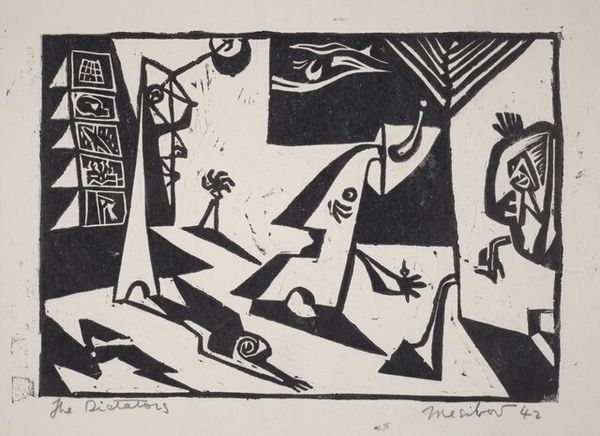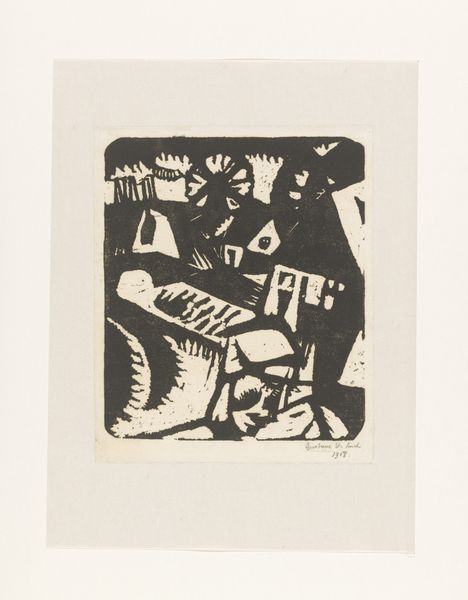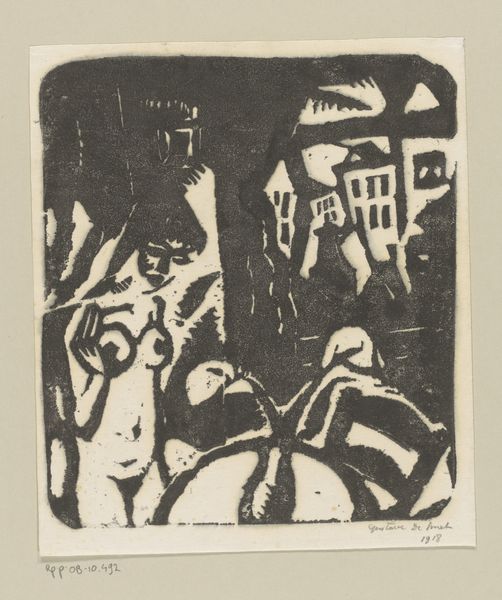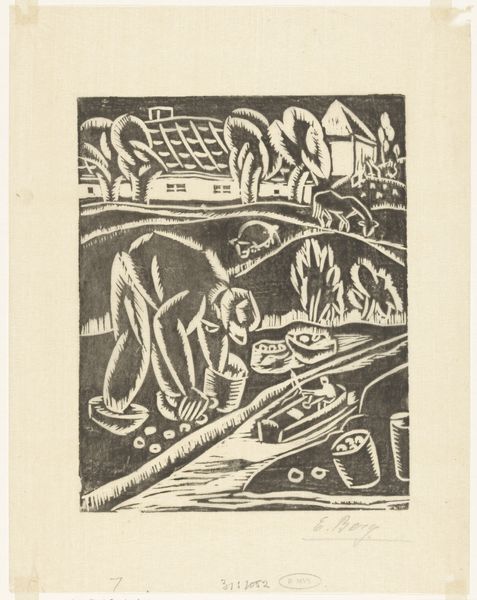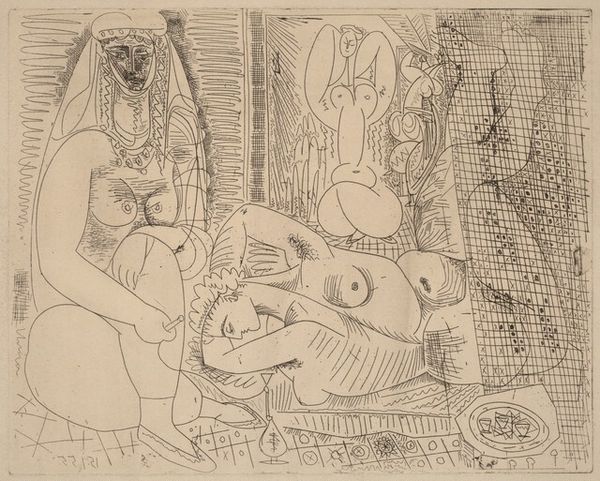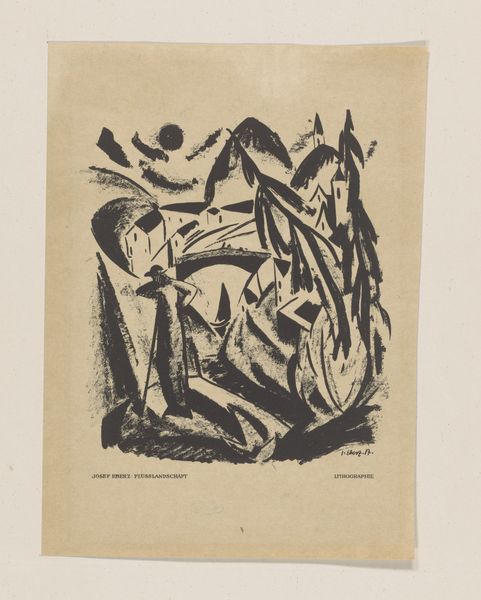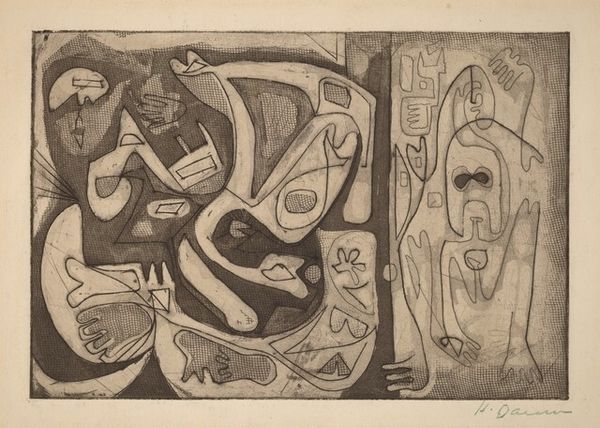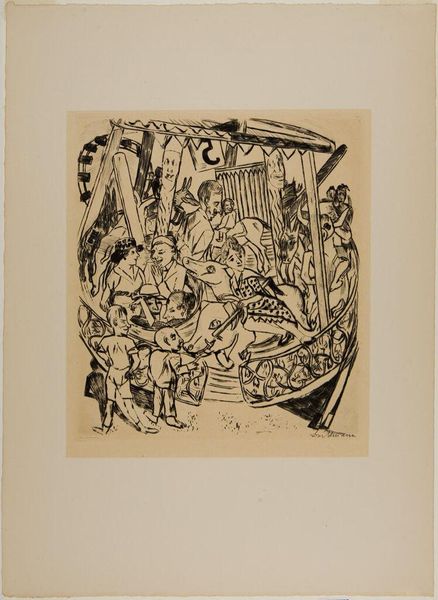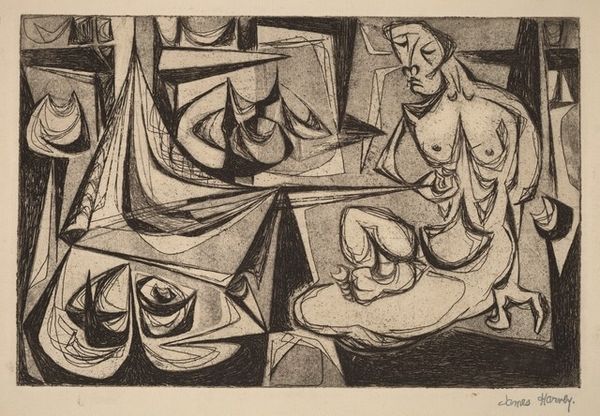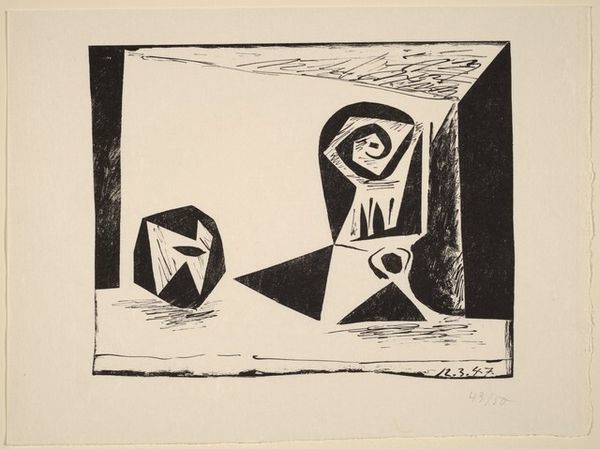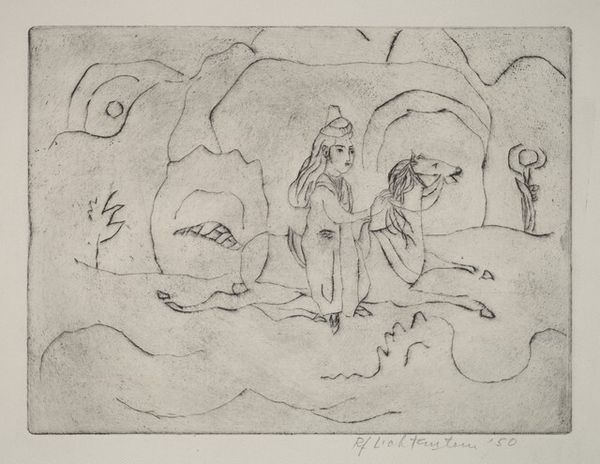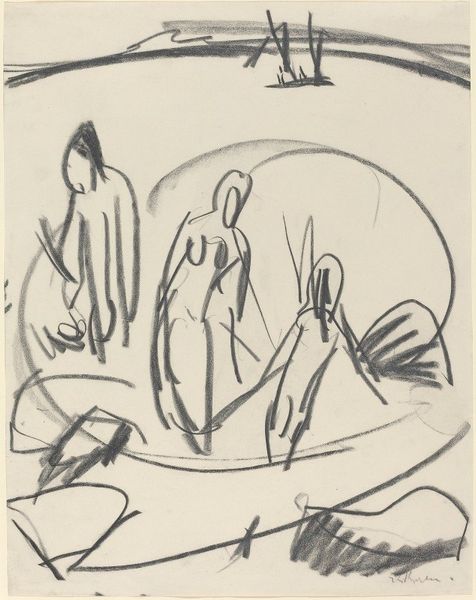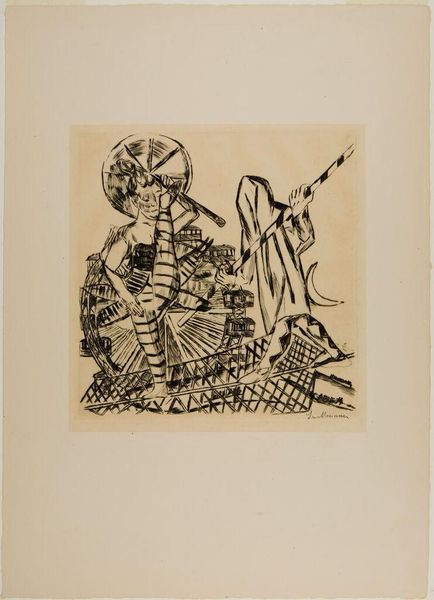
graphic-art, lithograph, print
#
graphic-art
#
cubism
#
narrative-art
#
lithograph
# print
#
figuration
#
monochrome
Copyright: National Gallery of Art: CC0 1.0
Curator: Here we have Pablo Picasso’s “Circus (Le cirque),” a lithograph from 1945. Editor: My immediate impression is one of playful melancholy, a stark contrast of black and white capturing fleeting moments. Curator: Indeed. Picasso employs a reductive, almost primal form of Cubism here. Notice how the monochromatic palette and fragmented forms create dynamic tension. Semiotically, we might interpret the high-contrast choices as emblematic of the pervasive wartime unease. Editor: It's difficult to ignore that 1945 marked the end of World War II. This circus scene, presented amidst the shadows, invites examination of its escapist tendencies. Who are these performers for whom entertainment transcends historical trauma? And, given Picasso's anti-fascist position, could there be veiled criticism of society’s willingness to ignore difficult realities? Curator: Perhaps. The interplay between positive and negative space becomes crucial here. It’s also worth noting the composition. The oval shape framing the central scene suggests both enclosure and a focused spectacle. What structural relationships emerge from these choices? Editor: And how might it evoke feelings of imprisonment? Post-war disillusionment might be manifested through the circus performers, seemingly trapped within an ongoing performance as society attempts to transition and rebuild after intense physical and emotional decimation. The imagery of spectacle and performance can feel like an illusion, especially when considering the complex realities. Curator: Intriguing thoughts. Looking purely at form, observe the linear quality defining each figure. They seem constructed more from lines and angles rather than volume. Editor: And perhaps in looking beyond lines, we see them as symbols within Picasso's wider exploration of modern anxieties. His work often provides a complex record of a tumultuous era, both formally and politically. Curator: This examination illuminates the layered qualities found even within apparently simple aesthetic forms. Editor: Right, and helps reveal how a circus scene in monochromatic print speaks volumes.
Comments
No comments
Be the first to comment and join the conversation on the ultimate creative platform.
